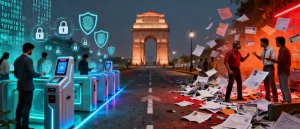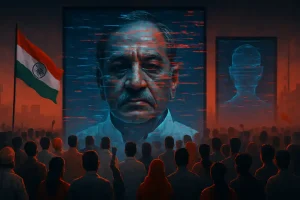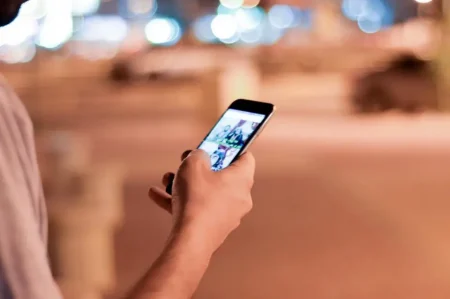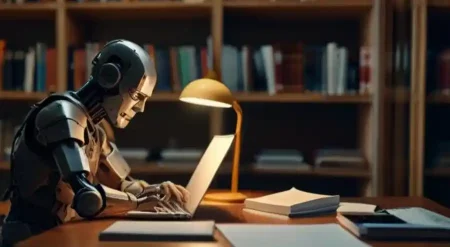Tesla CEO Elon Musk has announced that he plans to launch driverless ride-hailing services in California and Texas by next year…
Speaking at Tesla’s quarterly earnings call, CEO Elon Musk has made a bold claim: “We think that we’ll be able to have driverless Teslas doing paid rides next year.”
The fact that this is highly ambitious goes without saying, but to get this vision to fruition, Tesla will face a lot of technical and regulatory hurdles. Especially considering the fact that areas like California have extremely stringent autonomous vehicle regulations.
As of right now, Tesla operates an app-based ride-hailing service for employees in the San Fransico Bay Area, but these vehicles still rely on a safety driver. Musk’s latest claim comes after he had pledged at Tesla’s recent Robotaxi event that he planned to have an “unsupervised” self-driving option in certain vehicles by 2025.
Regulatory Hurdles in California
As mentioned earlier, California has very stringent policies for autonomous vehicles and this will pose a significant regulatory hurdle for Tesla’s ambitions. The California Department of Motor Vehicles (CDMV) requires permits for autonomous vehicle testing and deployment. In 2019, Tesla had received a permit for autonomous vehicle testing with a safety driver but at the time of writing, it had neither applied for or received a permit for testing autonomous vehicles without a driver.

In stark contrast, Alphabet’s Waymo – one of the leaders in the autonomous vehicle space – had been testing and meeting regulatory requirements from the CDMV before receiving a permit and offering paid rides in San Fransico and Los Angeles.
Ross Gerber, a shareholder at Tesla, says, “Dealing with regulators is a very difficult process. It’s not a walk in the park.” Musk is aware of these challenges: “It’s not something we totally control,” but expressed optimism about gaining approval next year.
What Happens in Texas…
Texas is a little different when it comes to autonomous vehicle deployment. Unlike California, Texas has fewer restrictions, making it a more viable options for Tesla to test out its driverless services. But despite the favourable regulatory environment, companies still have to test extensively before any kind of deployment.

Musk has sought a standardized approval process for autonomous vehicle across the country. He has claimed that the current fragmented state-level regulatory framework is a major hurdle when it comes to widespread deployment and adoption.
Technology and Its Challenges
Tesla’s advanced driver assistance system called Full Self-Driving (FSD) is the foundation that its robotaxi program is built on. However, FSD has faced severe backlash from regulators, particularly the US National Highway Traffic Safety Administration (NHTSA). A recent investigation into 2.4 million Tesla vehicles equipped with FSD followed reports of four collisions, including a fatal crash in 2023.
But these setbacks did not deter Musk from unveiling a futuristic two-seater Cybercab during their October Robotaxi event. With a steering wheel and pedals, this vehicle relies on cameras and artificial intelligence to navigate roads and traffic.
Needless to say, the concept is pathbreaking but it further increases the need for rigorous testing and regulations to ensure road safety.
Market Reactions and Implications
The unveiling of the Cybercab saw a 19% surge in Tesla stocks. The prediction was for a 20-30% growth in 2024. But this comes after a major dip in stock value earlier as there was no clear business plan for the robotaxi initiative.
The news that Tesla might enter the taxi market has impacted competitors like Uber and Lyft whose stocks took a dip after the announcement. As things stand, other riding-hailing apps face stiff competition if Tesla can get the necessary permits to launch its driverless army.

The Last Word
There are still many permits, regulations and technological hurdles standing between Elon Musk and his ambitious plans to launch his driverless fleet but if he is able to achieve that in 2025 or even in the years to come, it will be a significant advancement not just for ride-hailing but technology itself!
In case you missed:
- SpaceX’s Starship: A Heavy-Lift Future for 2026
- Mary Meeker’s AI Report: ChatGPT is Growing Faster than Google Search
- Samsung’s Galaxy S25 Phone Might Shape the iPhone 17 Air
- Grok 3 vs ChatGPT: Which One Should You Pick & Why?
- Grok’s ‘Spicy’ Feature lets you Generate Sexually Explicit Images
- OpenAI is now Focussing on Superintelligence!
- How AI is Rewriting Modern Banking Rules
- The Future of Online Marketing: Adobe introduces AI Agents
- Is the Foldable iPhone Around the Corner?
- Heavenly Bytes: Is AI the new Medium to God?










